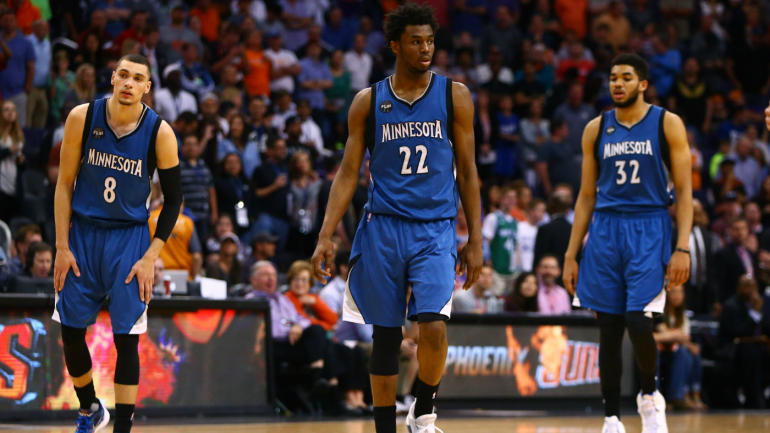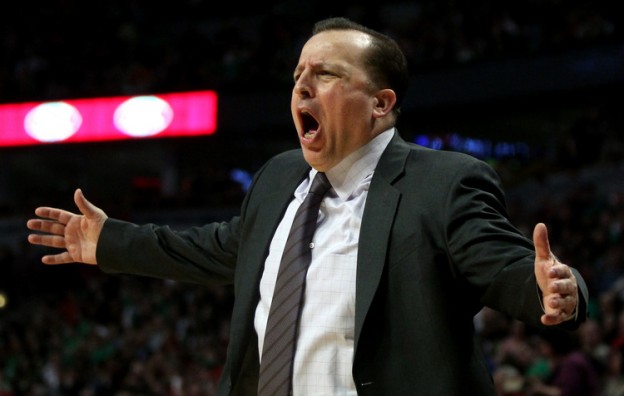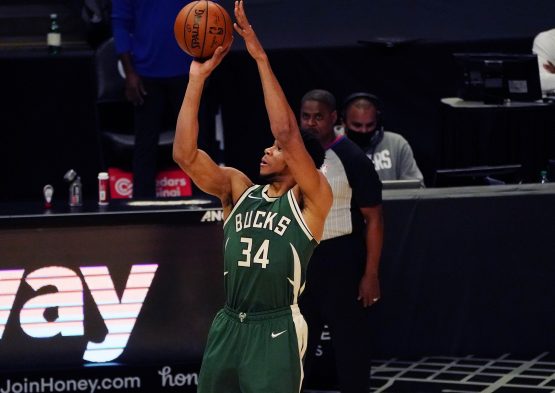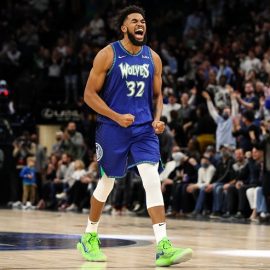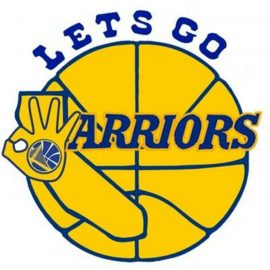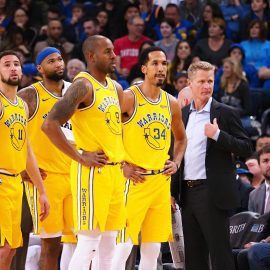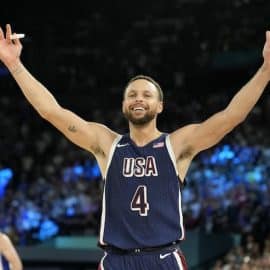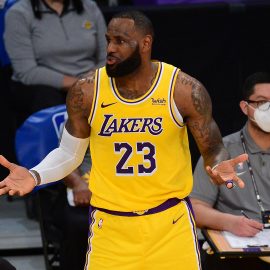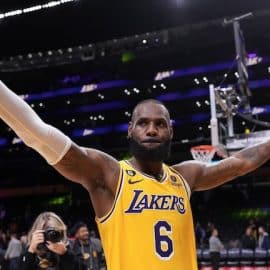Based on talent alone, the core of this years Timberwolves’ roster is as good any in the league. Still, especially compared to all of the preseason hype, the team has struggled mightily. The meltdowns have been maddening. The lackluster losses have become laughable. In some ways it’s more frustrating that the players have displayed their startling level of talent on numerous occasions, while the team remained unable to string together an extended series of victories (and, often, even positive quarters) until recently. Their lack of success to begin this year can be attributed to team-wide patterns of defensive neglect and offensive hero-ball basketball. Although they have looked better of late, it’s yet to be seen if the team can find what it takes to get back into challenge for a playoff spot.
The question becomes:
Why has this hyper talented roster with such a high caliber coach in Tom Thibodeau struggled as much as they have?
The answer I’ve come up with is:
***Compounding Dual-Directional Circumstantial Realities***
Truth be told, this struggle is … really complicated, hence the wordiness of the answer. Due to the unique mix of circumstances surrounding the young players on the roster and their old school head coach, their reflexes are butting up against each other which has resulted in a compounding of mistakes on the court. This has delayed them at least another half-season on their path to to the playoffs and beyond.
Consider first how the players got to this point in their careers. In this day and age, the lure of NBA contracts, shoe deals, and celebrity status is powerful and it has affected player development. The AAU system and one-and-done culture of the NCAA are geared toward promoting young players individually. Before playing in the NCAA, there couldn’t have been many times when young Timberwolves Andrew Wiggins, Zach LaVine, Karl-Anthony Towns, or Shabazz Muhammad were anything but the clear offensive weapon on their teams. With their athletic ability they were relied on to carry an offense. Their expected role was to be themselves. Furthermore, the desire to make splashy individual plays is encouraged by Youtube highlight mix tape culture. Now that they’re in the NBA, they’re no longer like men playing against boys, and their instincts to attack multiple defenders can come at the expense of the best play. Even Kris Dunn who had a long college career, shares this hero ball type mind set..
The bad habits developed by young stars are magnified on defense. They loose focus simply because that level of effort wasn’t required to defend their smaller and less athletic peers. This can be seen almost nightly in the defensive mindsets of KAT and Wiggins. They have all of the ability but are far too often standing flat footed, as if they’re daring opponents to drive on them. Youtube highlight reel footage actually encourages this because an easy way to show off high caliber athleticism is by closing the gap after getting beat. This doesn’t work in the NBA. The roster of oppositions are filled with players near their level athletic ability, so flat footed-ness frequently gets answered with a dunk or an open three.
This is a league-wide trend with many highly talented hoopers entering the NBA with little understanding of how to be a role player. The effects of this is magnified by the Timberwolves’ collective youth. It’s not an excuse for the Timberwolves as much as it’s a reality. The effects of collective youth has been extended due to coaching shuffles and system changes. Over the past five years, the young Wolves have been coached at High School, AAU, College and International levels, and now since the rookie years of Muhammad and Gorgui Dieng, the Twolves have gone through Rick Adelman, Flip Saunders, Sam Mitchell, and Tom Thibodeau. Because of this, it’s reasonable to conclude that changes in system and tactics would further complicate on-court reflexes when the players can maintain focus. These are the compounding circumstances holding the players back.
Thibodeau has summed up a lot of the players’ struggle by citing trial and error. Consider the angle Coach Thibodeau is coming from, and it becomes evident that he is actually in a similar place. This season puts Thibodeau in a different position than he’s ever been, even beyond his new role as President of Basketball Operations. The rosters he’s worked with usually have a critical mass of veterans in the rotation, and even the younger players he’s worked with, like Taj Gibson, Joakim Noah, and Jimmy Butler came out of multi-year college careers where they learned how to fit a role on a winning team. The few one-and-done rookies that he has worked with, like Derrick Rose, were surrounded with competent veteran NBA role players and high basketball IQ brains.
On offense Thibodeau’s system is set up so that the game determines which player gets the shots. He doesn’t count touches for certain players or limit them to certain areas on the court. He relies on the five men on the floor to make the right play leading to the best shot. With enough role players who know how their skills translate best to the NBA, one or two young players can experiment a little without great consequence.
The same can be said on defense. Thibodeau’s system involves a lot of switching on the perimeter designed to limit penetration and open looks from the outside. With veterans who understand how to consistently stay in a stance, engage in Thibodeau’s defensive concepts, and communicate with each other, this system forces teams into less efficient shots. In Thibodeau’s prior seasons, trial and error became his default method for young player development. They were taught the concepts, provided with the example of veterans, and they would either learn to find their place or be benched.
This season, Thibodeau’s rotations have not had the benefit of this critical mass of high IQ players. On offense, there are simultaneously fewer players who fully understand the benefits of moving the ball and who know how to play a supporting role. This is a problem in two ways. When one player forces the issue and gets bottled up, they often don’t know what to do next and the players who are on the court with them are inconsistent in where they will be and what they will do when this happens. This is why when a vet like Brandon Rush sees the court the ball starts to zip around a little more. Having that role player on the court brings the Twolves a bit closer to the meeting the requirements for playing Thibodeau’s desired open brand of offensive basketball.
Nonetheless, contrary to popular worries about Thibodeau when he was hired on as President of Basketball Operations, Coach Thibs hasn’t been quick to shift to veterans. He’s played the young players through their trial and error and their mistakes. It’s definitely a good thing he hasn’t jettisoned away young talent or cuffed them to the bench, but this puts him treading in new waters. These are the compounding circumstances complicating the coaching reflexes of Coach Thibodeau.
The dual direction of these complications from the side of the players and the head coach show that the struggle is real. Many people felt that with Thibodeau at the helm this talented team would show immediate growth on the defensive side of the ball and begin racking up the wins. These complications from both sides explain some of the complex issues this team is fighting through. It’s not really revealing and glaring problems with them, but more like a massive barrier that grew to obstruct their path.
The questions become how can the team get around or break through this barrier?
While Coach Thibodeau has been quoted saying that while he hates losing he likes the growth he’s seeing from the players. Still, he’s not making any excuses. After a sloppy fourth quarter in a loss to the Utah Jazz on January 7th, Thibodeau didn’t hold back his criticism.
https://twitter.com/fsnorth/status/817942793733582848?s=09
Since that game, the Wolves have won eight of their last eleven games. While it may not have been Thibodeau’s words that were the spark, it’s a step in the right direction. A few things stand out about this stretch of play. First, the offense looks a bit more structured. This suggests that Thibodeau and the coaching staff are doing more to steer the offense. Immediately after the loss in Utah, Rubio’s role on the ball expanded. He has recorded a string of plus ten assists and picked up his scoring as well. While Thibodeau still likes to put the ball in Wiggins hands, it’s becoming increasingly evident that off ball player movement and screens have been drawn up more regularly to help Wiggins gain an advantage. The team has also drawn up more action for Towns and Muhammad in the post. After the victory against the Phoenix Suns, Wiggins said something that rings out even more clearly about the positive direction of this team than his impressive game-winning bucket. He mentioned how important it was for the team to get after it defensively. He even talked about how he needed to box out more aggressively when switched on to a big. That mentality can take this freakishly athletic pack of wolves to the next level.
While this season has been seriously disappointing so far from an expectations standpoint, the grit these young players are showing is impressive. Regardless of the compounding struggles they have faced they are pressing through, and this shows that they are responding well to Thibodeau’s coaching. Thibodeau also appears to be making adjustments which are giving the players the tools they need to break though the barriers in their path. The overtime victory over the Orlando Magic looked a lot like the loss on January 7th to Utah for a while, but this time the Wolves found a way to win. This is a very good sign. Now, as the Wolves sit only two and a half games out of the eight seed the West, the Wolves look like they could be poised to live up to their preseason hype after all.
Add The Sports Daily to your Google News Feed!
